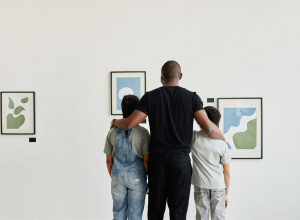 3 min read March 2024 — Atlanta has a rich array of museums and cultural institutions that span the spectrum of art, history, politics, and science, with over 30 museums located in the metro area. These establishments are not merely a showcase for artifacts and artworks; they are dynamic forces shaping societal understanding.
3 min read March 2024 — Atlanta has a rich array of museums and cultural institutions that span the spectrum of art, history, politics, and science, with over 30 museums located in the metro area. These establishments are not merely a showcase for artifacts and artworks; they are dynamic forces shaping societal understanding.
“One of our founders said something that resonates with me to this day: While we are a museum, the community is really the museum,” said Edwin Link, executive director of the Children’s Museum of Atlanta, in an interview with Focus:. “We continue to grow in new and exciting ways and for that reason, we are focusing on a few different strategies. The most important is that we continue to grow access to the museum and ensure that all families can get access to high-quality play,” he said.
Museums make an impact that reaches beyond education, economics, and social spheres. Of these, measuring social impact can be particularly challenging with data-based evidence. The Measurement of Museum Social Impact (MOSMI) understands the need to demonstrate with quantitative data the impact cultural institutions have on visitors, which is why, since 2020, they’ve been working to validate a museum social impact survey, measure museum social impact nationally, and develop and publish a museum social impact toolkit.
The findings of the MOMSI study highlight the transformative role museums play in shaping individuals’ perceptions and interactions. Participants identified continuous learning and engagement as the foremost community benefits offered by these institutions, in addition to free admission, economic benefits, the institution’s ability to enhance tourism, preserving history, and providing a safe space. Moreover, participants emphasized the importance these spaces provide to diverse communities and the opportunities they offer for strengthening relationships among families and friends.
The American Alliance of Museums elaborates on how museum outreach and programming can champion overlooked communities and prompts museum leaders to consider whether they’re ready to be fearless, seize opportunities, collaborate, share stories, and maintain ongoing relationships and dialogues. The alliance underscores the dual role of museums: not just to preserve and present history, but also to actively contribute to building a more inclusive and engaged community.
Sheffield Hale, president and CEO of the Atlanta History Center, shared his approach to inclusivity in an interview with Focus:. “To ensure our exhibits and programs reflect diverse local perspectives, we actively engage with community groups for input. For example, when planning new exhibits, we consult community members about what they want to see and value their feedback. We also conduct outreach to help preserve artifacts and archival materials, particularly from underrepresented communities in our collections. Our goal is to build relationships and help these communities preserve their artifacts, whether they stay in their possession, come to us, or go elsewhere,” he said.
Hale elaborated on specific initiatives, emphasizing their focus on filling gaps in their exhibits. “For projects like the First Americans exhibit, we’re involving senior members of the Muscogee Creek and Cherokee communities to help us shape the narrative,” he stated. “Their involvement ensures that the story of their removal to Oklahoma and subsequent history is told from their perspective. This approach is about more than just showcasing historical artifacts; it’s about presenting living histories and ensuring that the stories we tell are accurate, respectful, and inclusive.”
According to the Institute of Museum and Library Services, cultural institutions enhance resident’s well-being through their services, programs, and collaborations. Their study revealed that museums positively influence various aspects of social well-being, including community health, school effectiveness, institutional connection, and cultural opportunities. The Institute suggests that these institutions are instrumental in fostering social and institutional connections that catalyze creativity, ingenuity, and empathy.
Despite the contributions museums and cultural institutions make to society, they face significant challenges in sustaining their operations. Members of the American Alliance of Museums are searching for ways to increase attendance and revenues while lowering expenses. This financial strain is compounded by a looming funding crisis as the traditional benefactors, primarily from the baby-boomer generation, begin to pull back or pass away. These institutions have historically relied on philanthropy as a cornerstone of their financial structure, with private donations accounting for about 40% of operating revenues pre-pandemic.
The CCS Funding survey in 2023 revealed that while the arts and culture remain a top priority for baby boomers, they fail to rank as highly among Gen X, millennials, or Gen Z. The question of how to engage young donors is not a new one, but it has become increasingly existential for museums. In the current context, these institutions must adapt and innovate to secure their financial futures while remaining committed to their mission to serve and enrich their communities.
For more information visit:
https://www.atlantahistorycenter.com/
https://childrensmuseumatlanta.org/
